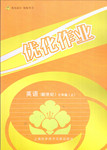题目内容
The ________ that women ________ during the war ________ great.
- A.part, played, were
- B.parts, played, were
- C.part .played , was
- D.parts, playing, was

 培优三好生系列答案
培优三好生系列答案 优化作业上海科技文献出版社系列答案
优化作业上海科技文献出版社系列答案New York Times---( DINITIA SMITH )Tomorrow is the 433d anniversary of Shakespeare’s birth. A recent survey shows that more people are watching him, reading him and studying him than ever before.
Consider the recent yearly conference of the Shakespeare Association of America in Washington, where more than 600 people who study or admire Shakespeare from 18 countries took in topics like ‘‘Whither Attribution Studies,’’ ‘‘Unpopular Shakespeare’’ and ‘‘Sex Me Here,’’ a talk on breast-feeding and Lady Macbeth.
‘‘The national media is saying that fewer students’ taking Shakespeare,’’ Barbara Mowat, the editor of The Shakespeare Quarterly, observed in a speech at the conference. ‘‘But Shakespeare is thriving.’’ The association’s membership has increased by a third since 1990.
The Shakespeare business is so good these days that W. W. Norton is introducing a huge new collections of the plays into the already crowded field just in time for tomorrow’s birthday anniversary. Priced at $44.95, ‘‘The Norton Shakespeare: Based on the Oxford Edition’’ runs for 3,420 pages, offering introductions, illustrations and notes and three versions(版本) of ‘‘King Lear.’’
Today, movies and videos have made the plays even more accessible. Last year, ‘‘William Shakespeare’s Romeo and Juliet’’ was No. 1 at the box office when it opened, and it grossed nearly $50 million. In New York in January, crowds lined up in the freezing cold to see Kenneth Branagh’s four-hour ‘‘Hamlet.’’ The students select a scene and then have a violent discussion about it.’’ Influenced by films, professors are increasingly teaching students by having them perform the plays.
【小题1】Why people from 18 countries came to Washington this year?
| A.To celebrate Shakespeare’s 433d birth day only. |
| B.To watch some plays by Shakespeare as planned. |
| C.To celebrate Shakespeare’s birthday and study his works. |
| D.To discuss how to teach students using Shakespeare’s plays. |
A. Washington D.C. B. Shakespeare Association.
C. The birthday anniversary. D. The Shakespeare business.
【小题3】Which of the many plays by Shakespeare was most popular the year before?
| A.King Lear. | B.Hamlet. |
| C.Macbeth. | D.Romeo and Juliet. |
A. More and more people are becoming interested in Shakespeare.
B. Shakespeare business is being run well in America nowadays.
C. Plays by Shakespeare can be used at school for more studies.
D. Shakespeare belongs not only to Britain but also to the USA.